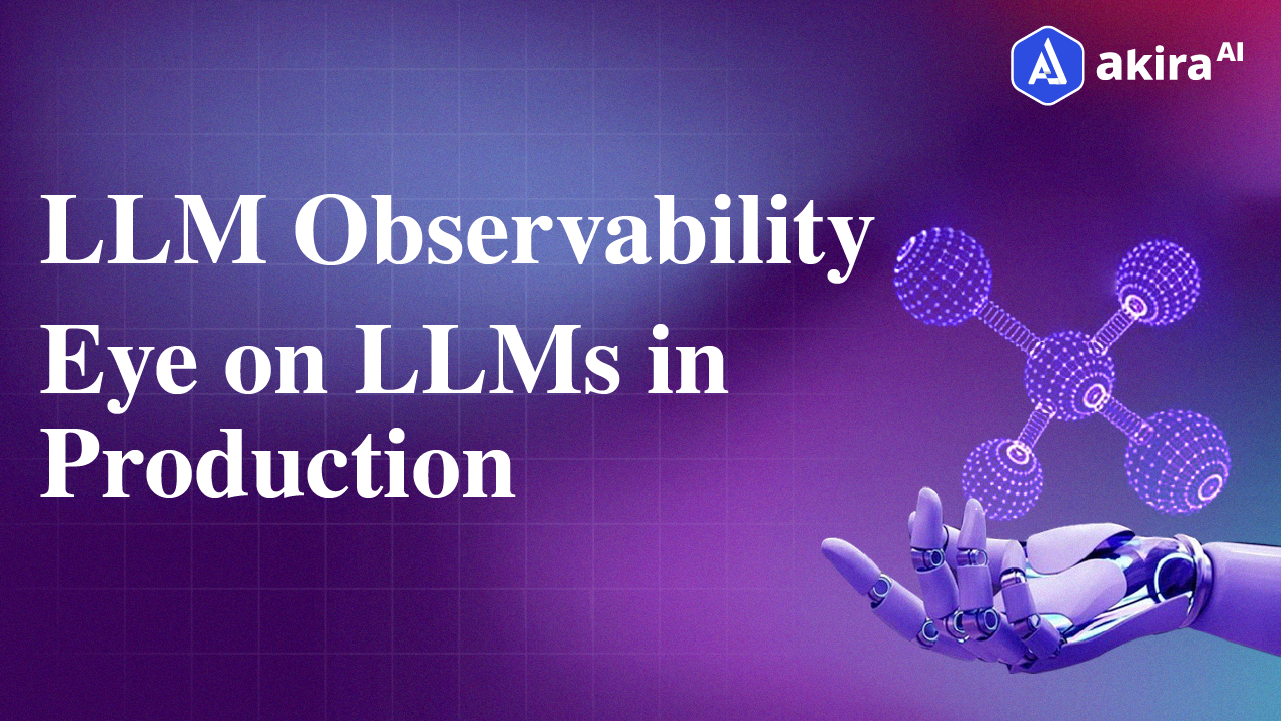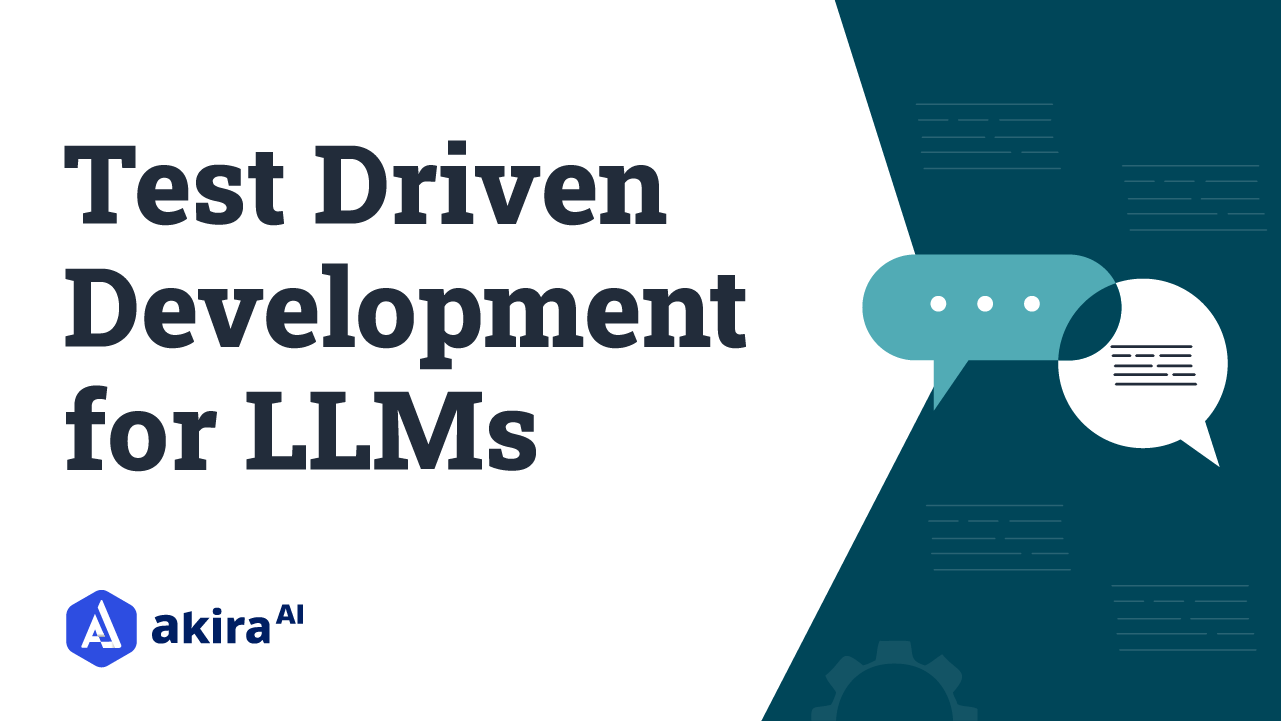Key Insights
Einstein SDR Agent autonomously engages with inbound leads, in natural language, to answer questions, handle objections, and book meetings for human sellers Einstein Sales Coach Agent autonomously engages in role-plays with sellers, simulating a buyer during discovery, pitch, or negotiation calls Accenture will leverage these agents to improve deal team effectiveness, scale to support more deals, and allow their people to focus their time and effort on the most complex deals

Introduction
In the ever-evolving landscape of software development, the concept of Test-Driven Development (TDD) has proven to be an invaluable tool for ensuring the quality and reliability of applications. However, when it comes to the intricate realm of Large Language Models (LLMs), implementing TDD takes on a unique set of challenges and opportunities that demand our attention.
Testing LLMs is a formidable task due to their complexity and the often unpredictable, 'creative' nature of their output. Nevertheless, it is a pivotal task for both automation and safety. In this article, we will delve into the world of TDD for LLMs, exploring the methodologies and strategies that can enhance the development of applications powered by these sophisticated models.
How Does Test-Driven Development Work for LLMs?
Incremental Dataset Expansion
The process of incremental dataset expansion is a crucial step in TDD for LLMs. It involves gradually enlarging your evaluation dataset as understanding the problem domain deepens. This approach aligns with the fundamental principle of TDD, which emphasizes starting small and progressively refining your tests and code.
Begin with manageable examples that serve as a foundation for understanding how LLMs function within your specific application context. These early test cases act as a springboard for developers to build an intuition for the model's behavior and responses to various inputs.
As your comprehension of the LLM's strengths and limitations grows, you can incrementally augment your evaluation dataset. This expansion might involve incorporating more diverse and challenging test cases that mirror real-world scenarios. By taking this gradual approach, you can avoid overwhelming the development process and ensure that your testing efforts remain focused and productive.
Challenging and Diverse Test Cases
The effectiveness of TDD for LLMs hinges on the diversity and complexity of your test cases. While it may be tempting to start with simple examples, the real value of testing lies in challenging the LLM with a wide array of inputs.
Challenging test cases push the boundaries of the model's capabilities. They help reveal its weaknesses and areas that require improvement. These test cases involve ambiguous queries, complex sentence structures, or domain-specific jargon the model needs to understand and respond to accurately.
Diversity in test cases is equally essential. LLMs are trained on vast and diverse datasets, and their performance can vary significantly depending on the input. Therefore, it's vital to include test cases that span different languages, topics, and linguistic complexities. This diversity ensures your application is robust and adaptable, catering to a broad user base.
Remember that in TDD, the initial goal is not to pass all tests but to use them as a baseline for improvement. Tests should initially fail, exposing areas of weakness that can be systematically addressed throughout the application's development cycle.
Utilizing LLMs to Test LLMs
One distinctive strategy in TDD for LLMs is the utilization of LLMs themselves to test the application. This innovative approach leverages the unique ability of LLMs to comprehend and evaluate language-based tasks. It acknowledges that LLMs are not only powerful tools for generating text but also for assessing the quality and relevance of the text generated.
Using LLMs to test LLM-powered applications serves several purposes. First, it helps assess the model's ability to understand and respond to its output, fostering self-awareness and improvement. Second, it provides a consistent and objective evaluation mechanism, reducing the subjectivity associated with human evaluation.
Additionally, this strategy is precious when dealing with intricate challenges LLMs pose, such as handling ambiguous queries or generating contextually relevant responses. By employing LLMs as evaluators, you can gain valuable insights into the model's performance and make informed decisions about enhancements.
Metrics Selection
Choosing appropriate metrics for evaluating your LLM application is a critical aspect of TDD. The selection of metrics should align with your understanding of the expected outcomes and the goals of your application.
If you can access ground truth data, you can opt for metrics that directly compare your LLM's performance against known labels. This approach is akin to traditional machine learning evaluation, where metrics like precision, recall, and F1 score can be employed.
However, in many LLM applications, ground truth data may be limited or available. In such cases, an alternative is to seek evaluation from another LLM. This approach relies on the premise that a competent LLM can provide valuable assessments of your model's performance. Metrics such as cosine similarity or BLEU score can compare responses generated by different LLMs.
The key is to select metrics that align with your application's objectives. For example, if your LLM-powered chatbot aims to provide informative and contextually relevant responses, metrics measuring coherence and informativeness might take precedence.
Challenges in Test-Driven Development for LLMs
The path of developing applications with LLMs using TDD is paved with challenges that demand innovative solutions. Here are some of the prominent hurdles:
Testing Generative Models: LLMs, as generative models, present difficulties due to their intricate nature and the inherent creativity in their responses.
Interactive Approach: Bug discovery, planning, and iteration with LLMs require an interactive approach that prioritizes recall over precision, reflecting the unique dynamics of these models.
Use Case Generation and Testing: While some use cases may be predefined, the creative capacity of LLMs can be harnessed to explore new avenues for application functionality.
Versioning and Non-Regression Testing: LLMs evolve rapidly, posing challenges in version management, non-regression testing, and dealing with concept drift.
Probabilistic Nature: LLMs, being inherently probabilistic, emphasize the importance of TDD in prompt engineering far more than in traditional software development.
How Does Test-Driven Development Enhance LLM Accuracy?
Test-driven development (TDD) is a cornerstone in enhancing the accuracy of Large Language Models (LLMs) within the sphere of software development. While traditional evaluation metrics like precision, recall, and accuracy may not directly apply to LLMs due to their unique characteristics, TDD offers a robust framework for addressing these challenges confidently.
Unique LLM Characteristics: LLMs stand apart from traditional ML models due to their complexity and the diverse data upon which they are pretrained. Their "knowledge" spans many topics, making it challenging to ascertain their exact training distribution. This complexity necessitates a fresh evaluation approach.
Divergent Test Distribution: When an LLM is applied to a specific task or domain, the test data may differ significantly from its training data. This disparity can lead to varying performance levels and unpredictable results, necessitating meticulous testing.
Role of TDD's in Enhancing LLM Accuracy
Iterative Refinement
TDD operates on the principle of iterative development, which is particularly advantageous when working with LLMs. Iteration in the context of LLMs means a continuous cycle of testing, analysis, and refinement throughout the development process.
This iterative approach enables developers to catch inaccuracies and biases early in the development cycle. LLMs can sometimes produce unexpected or biased results, and TDD ensures these issues are identified promptly. By spotting these problems early on, developers can address them before they become deeply embedded in the application.
Furthermore, the iterative nature of TDD aligns well with the evolving nature of LLMs themselves. These models are constantly being updated and improved by their creators. By adopting TDD, developers can seamlessly integrate new versions of LLMs into their applications while maintaining the reliability and quality of their software.
Customized Evaluation Metrics
LLMs often require customized evaluation metrics because they don't fit neatly into traditional evaluation frameworks. While metrics like precision and recall are standard in machine learning, they may need to capture the nuances of LLM behavior fully.
TDD encourages developers to craft evaluation metrics tailored to the specific objectives of their LLM-powered applications. These metrics may encompass aspects such as the diversity of responses, coherence in generated text, or the ability to generate contextually relevant information. By developing metrics that align with the unique goals of the application, developers gain a more nuanced understanding of the LLM's performance.
For example, in a chatbot application, a customized metric might assess the percentage of user queries that received helpful responses, considering not only the correctness but also the relevance and clarity of the answers provided.
Diverse Test Cases
Rigorous testing is a fundamental tenet of TDD, and when applied to LLMs, it requires including a wide array of diverse test cases. The diversity in test cases is essential to uncovering the strengths and weaknesses of LLMs and ensuring their adaptability across various tasks and domains.
Diverse test cases involve a range of linguistic complexities, such as varying sentence lengths, grammar structures, and languages. They may also cover various topics, from scientific queries to pop culture references. By exposing the LLM to this diversity, developers gain insights into its ability to handle different inputs and adapt to various user needs.
Incorporating diverse test cases also helps identify potential biases or limitations in the model's responses. For instance, an LLM trained predominantly on one type of content might need help with subjects outside its training data. TDD with diverse test cases acts as a diagnostic tool, pinpointing areas where the model may require further training or fine-tuning.
Quantitative Measurement
Quantitative measurement is a cornerstone of TDD, providing empirical evidence of the LLM's performance. This data-driven approach is crucial for tracking progress, identifying areas for improvement, and safeguarding against unintended regressions.
Developers can collect quantitative data on various aspects of LLM performance, such as response times, error rates, and user satisfaction scores. This data not only helps in assessing the model's current state but also serves as a benchmark for future iterations.
Moreover, quantitative measurement allows for objective comparisons between different versions of the LLM or with other models. This comparative analysis helps developers make informed decisions about model selection, fine-tuning strategies, and optimization efforts.
Conclusion
In the realm of LLM-powered application development, TDD is a powerful ally. As the developer, you are pivotal in creating the initial proof-of-concept test cases. Over time, these cases evolve through user feedback, shaping your evaluation dataset. By incorporating challenging and diverse examples, you enable your production model to reveal its limitations, thus providing empirical evidence for improvement.
Fine-tuning your base LLM and refining prompts are two options for iteration. User feedback can inform fine-tuning, while prompt engineering involves manual exploration of different prompts to enhance evaluation metrics. This iterative process, fueled by the feedback loop from users, propels your application toward ever-higher performance standards.
In the dynamic landscape of LLM-driven applications, embracing Test-Driven Development is not a choice but a necessity. It empowers developers to navigate the complexities, unlock the potential, and continuously enhance the capabilities of these transformative language models.


